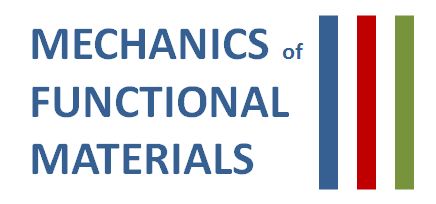Thermodynamically consistent phase-field modeling of elastocaloric effect: Indirect vs direct method
New Publication in “International Journal of Mechanical Sciences”
2025/03/20

Authors: Wei Tang, Qihua Gong, Min Yi, Bai-Xiang Xu
Modeling elastocaloric effect (eCE) is crucial for the design of environmentally friendly and energy-efficient eCE based solid-state cooling devices. Here, a thermodynamically consistent non-isothermal phase-field model (PFM) coupling martensitic transformation with mechanics and heat transfer is developed and applied for simulating eCE. The model is derived from a thermodynamic framework which invokes the microforce theory and Coleman–Noll procedure. To avoid the numerical issue related to the non-differentiable energy barrier function across the transition point, the austenite–martensite transition energy barrier in PFM is constructed as a smooth function of temperature. Both the indirect method using isothermal PFM with Maxwell relations and the direct method using non-isothermal PFM are applied to calculate the elastocaloric properties. The former is capable of calculating both isothermal entropy change and adiabatic temperature change (ΔTad), but induces high computation cost. The latter is computationally efficient, but only yields ΔTad. In a model Mn–22Cu alloy, the maximum ΔTad (ΔTmaxad ) under a compressive stress of 100 MPa is calculated as 9.5 and 8.5 K in single crystal (3.5 and 3.8 K in polycrystal) from the indirect and direct method, respectively. It is found that the discrepancy of ΔTmaxad by indirect and direct method is within 10% at stress less than 150 MPa, confirming the feasibility of both methods in evaluating eCE at low stress. However, at higher stress, ΔTmaxad obtained from the indirect method is notably larger than that from the direct one. This is mainly attributed to that in the non-isothermal PFM simulations, the relatively large temperature increase at high stress could in turn hamper the austenite–martensite transition and thus finally yield a lower ΔTad. The results demonstrate the developed PFM herein, combined with both indirect and direct method for eCE calculations, as a practicable toolkit for the computational design of elastocaloric devices.
Link to Article
International Journal of Mechanical Sciences, Published: 15 April 2025


